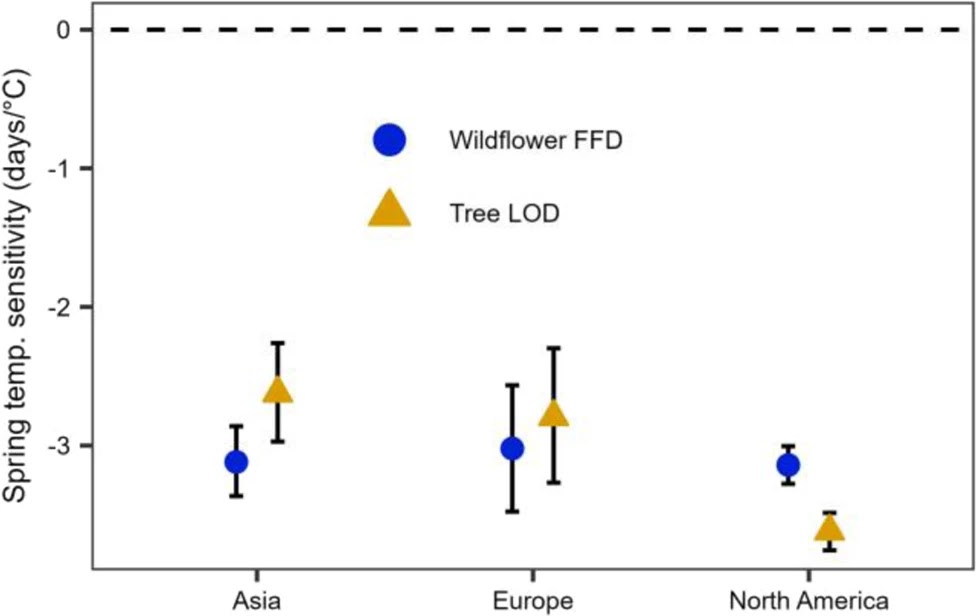By Richard B. Primack
“Books are the treasured wealth of the world and the fit inheritance of generations and nations.” Henry David Thoreau in Walden. And one could say the same about herbarium specimens.
For spring woodland wildflowers, timing is everything as they flower early in spring before the trees leaf out. Come out too early and it's still winter; too late and it’s too shady under the forest canopy.
But the timing of spring is increasingly affected by climate change. When trees leaf out earlier due to a warming climate, will the wildflowers shift too, or will they be out of luck?
In a recent Nature Communications study, we used herbarium specimens from three continents to examine how wildflower flowering times and tree leaf out times have changed over time and in response to climate.
 |
| Thousands of herbarium specimens from East Asia, Europe, and Eastern North America were evaluated to determine past wildflower flowering times (circles) and tree leaf out times (crosses). |
We found that trees in North America are significantly more sensitive to warmer temperatures in the spring—meaning they shift their timing more—than the understory wildflowers. If this shift continues, the already-short period of full sunlight for spring wildflowers could get shorter with negative consequences for their energy budgets.
 |
| In Eastern North America, wildflower flowering times are distinctly less sensitive to temperature than tree leaf out times, but this is not so in East Asia and Europe. |
But in Europe, wildflowers and canopy trees seemed to be shifting at about the same rate. And in Asia, the understory wildflowers were shifting more than the trees—meaning they might actually get more light in a warmer future.
Citation:
Lee, B.R., Miller, T.K., Rosche, C. et al. Wildflower phenological escape differs by continent and spring temperature. Nat Commun 13, 7157 (2022). https://doi.org/10.1038/s41467-022-34936-9

No comments:
Post a Comment